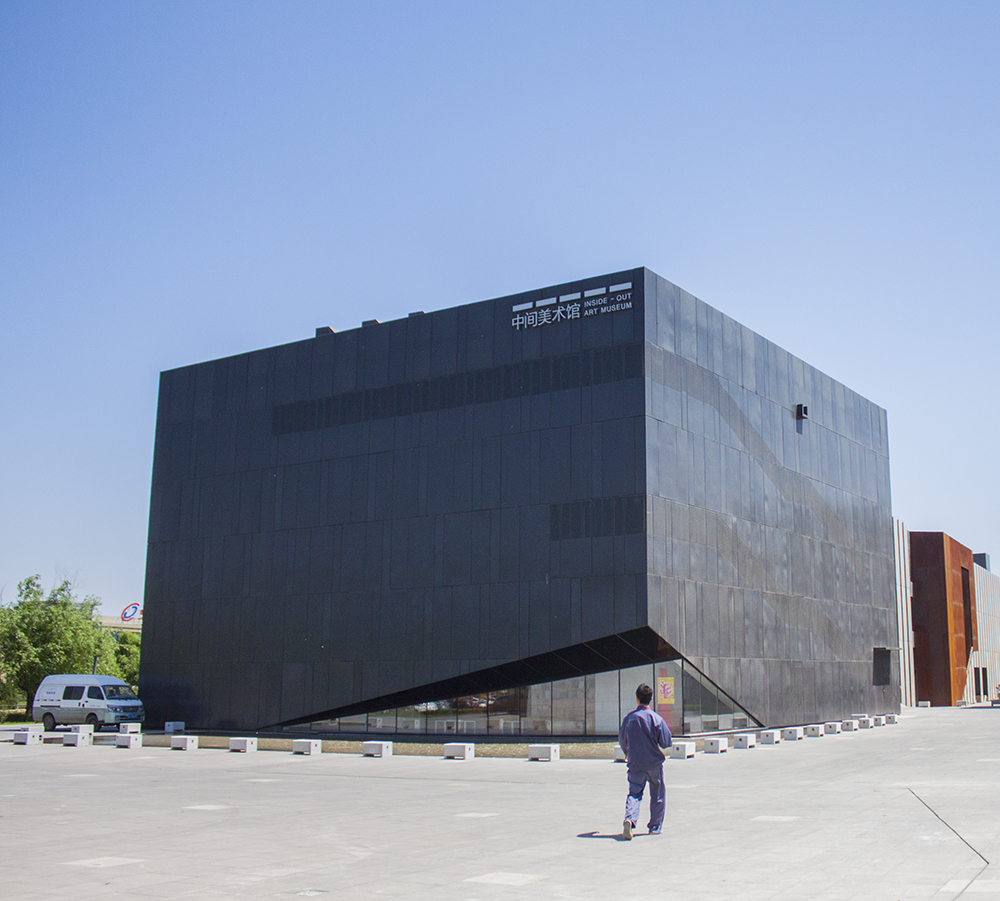The Inside Out Museum is one of the newest additions to Beijing's cultural scene, and well as one of the youngest artist residencies listed on China Residencies. The residency hosts one to two artists at a time, in loft studios adjoining a brand new museum that presides over the far west side of Beijing, closer to the mountains then to any part of the capital's hustle and bustle. The surrounding village in this quickly developing neighborhood is a perfect example of China in flux, a melding of rural and urban, where traditional lifestyles with daily vegetable markets on the streets exist besides the most modern architecture of a new cultural institution.
We visited the museum and residency on a bright blue-sky day to meet with residency coordinator Hu Ye (Yaya Hu), artist in residence Eva Evrard and interview the museum's artistic director, Zhou Yi:
China Residencies: How did the Inside Out Museum and Residency come to be?
Zhou Yi: The museum is four years old, and I started here two years ago as a curator. This residency is also very young: we had a test run just last year, in conjunction with a big group show of 15 different artists from Europe and the US who came for the summer to make large scale sculptures and work.
CR: What is interesting about this this area, far out on the west side Beijing?
ZY: We're quite far from the contemporary art scene here, but this area has more than a dozen universities. The art scene on the east side (in 798 & Caochangdi) came after, it actually all started out here in Yuanmingyuan but the artists were chased by the local authorities at the time. The authorities didn't want artists to mix with students, afraid colleges students are easily agitated by new thoughts.
This area is quite remote, but it's close to the mountains. The immediate neighborhood a mix of rural and urban, most people living around here are migrant workers, who came from other parts of the country to find work in the city. This is a pretty good place to get to know the "real" China.
CR: Why is China an interesting place for artists?
ZY: Things here change every day. Nothing is quite settled. This makes for a very good experimental ground for social activity.
CR: What kinds of artists are you interested in for the residency?
ZY: We're open to all kinds of mediums, and we welcome people who come explore social practices, and practices outside of their usual medium.
CR: Do you hosts artists all year round?
ZY: It's more difficult to get applications in the winter, but we had a photographer apply with a proposal of photographing Beijing in the winter, because that's when the pollution is worst. It's quite an interesting proposal, to photograph air.
CR: What opportunities do resident artist have to show their work?
ZY: We would like to expand our connections with different institutions, educational programs, and galleries in Beijing. We are also planning to bring young curators here to give them opportunities to curate local artists in collaboration with us or with galleries.
We try to talk to the artists before they come, to understand what they do, to understand what their interests are, and sometimes, before they come in, make specific connections and plans.
CR: What is your vision for the residency program?
ZY: We would also like to have more artists with social-based practices to come here, to get to know a different culture and interact with people. I also want to get more studios in the future and grow the program. I think the most important is for the residency to be free for the artists. We want the best artists and best minds to come.

